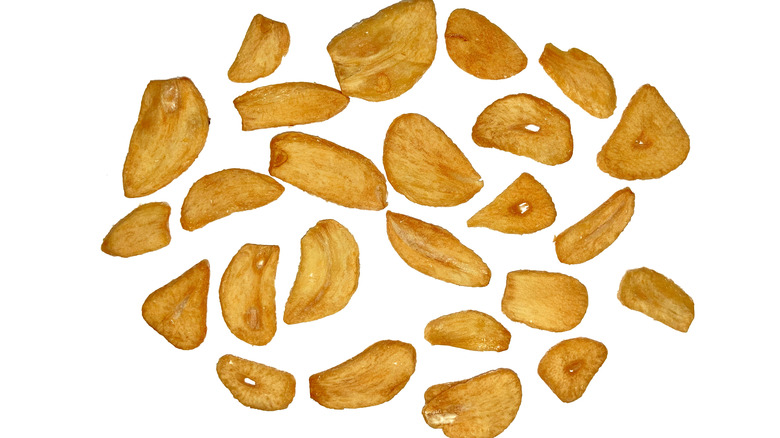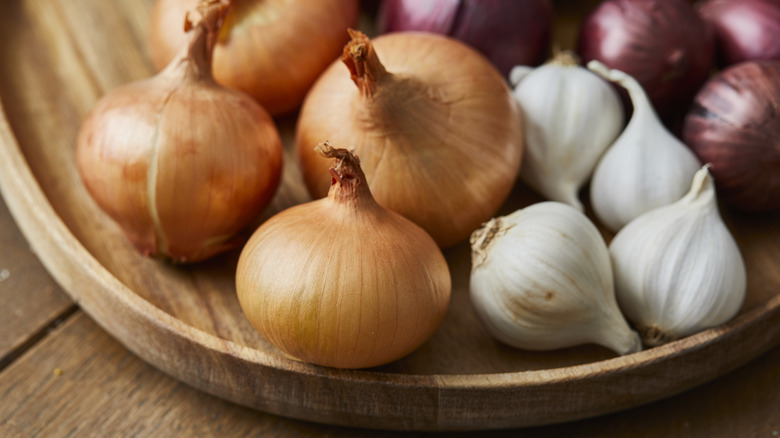Seriously, Dust Your Garlic Chips With Powdered Sugar
Garlic chips might be the perfect food. The crisp little golden-brown wafers of garlicky magnificence make the perfect garnish for just about any savory dish — but especially Thai and Vietnamese recipes. Best of all, frying garlic is a pretty simple process that can be done either in a flash in the microwave or on the stovetop using just two ingredients: thinly sliced garlic cloves and oil. However, there's a third ingredient you should introduce to your garlic chip-making process, and it's not salt — it's powdered sugar. A light dusting of the sweet baking staple on just-fried garlic chips will offset any harshness and render them irresistible.
At first blush, this pro tip might seem a little weird: This is a savory garnish, so what's up? Anyway, doesn't frying enhance garlic's sweetness? The short answer has to do with balancing flavors; the long answer involves chemistry concerning natural sugars and organosulfur volatile compounds.
Familiarize yourself with the flavor star
Our palates can identify five distinct flavors: Sweet, sour, bitter, spicy, and salty (which is inclusive of umami). Just like no melody can be constructed out of solely one note, no food contains any one of these five flavors. Further, truly great dishes skillfully blend them together, capitalizing on the fact that certain flavors either enhance or balance other ones. With respect to dusting your garlic chips with powdered sugar, it works so well because sweetness balances bitterness (and because of the way powdered sugar dissolves quicker than the granulated stuff).
A visual representation of these flavorful relationships often takes the form of a flavor star, with each taste assuming one of its five points. Sweet also balances sour, as you might imagine, while sour balances spicy — and both of them enhance salty/umami. These are crucial things to know if your dish tastes out of balance: Is something too salty? Add a touch of bitterness, and so on. But you might be wondering, what makes fried garlic bitter?
The bitter truth about diallyl disulfide
There are a couple of reasons fried garlic has a bitter quality. The first is that fresh garlic contains a modest amount of sugar (less than raw onions), so there's not as much sweet, sweet caramelization happening. (If you've experienced the joys of crisp-fried onions or shallots, you already know that dusting them with sugar would not only be pointless, but destructive to their existing, toothsome sweetness).
The second bitter truth about garlic is that it's a sulfurous little devil, and sulfur has a bitter taste. Not only that, but the process of frying garlic in oil (either on the stovetop or in the microwave) makes diallyl disulfide, vinyldithiins, and methyl allyl disulfide its dominant volatile compounds (which we recognize as aroma and flavor). According to the NIH, this could be great news for your health, as diallyl disulfide has potential anti-inflammatory, antioxidant, antimicrobial, antibacterial, antiviral, antifungal, and anticancer properties — among other benefits. In practical terms, it means either dealing with a slight bitterness to your fried garlic (which might be your kick anyway), or a very modest dusting of either powdered sugar or a substitute for the smoothest taste. Seems a small price to pay.


